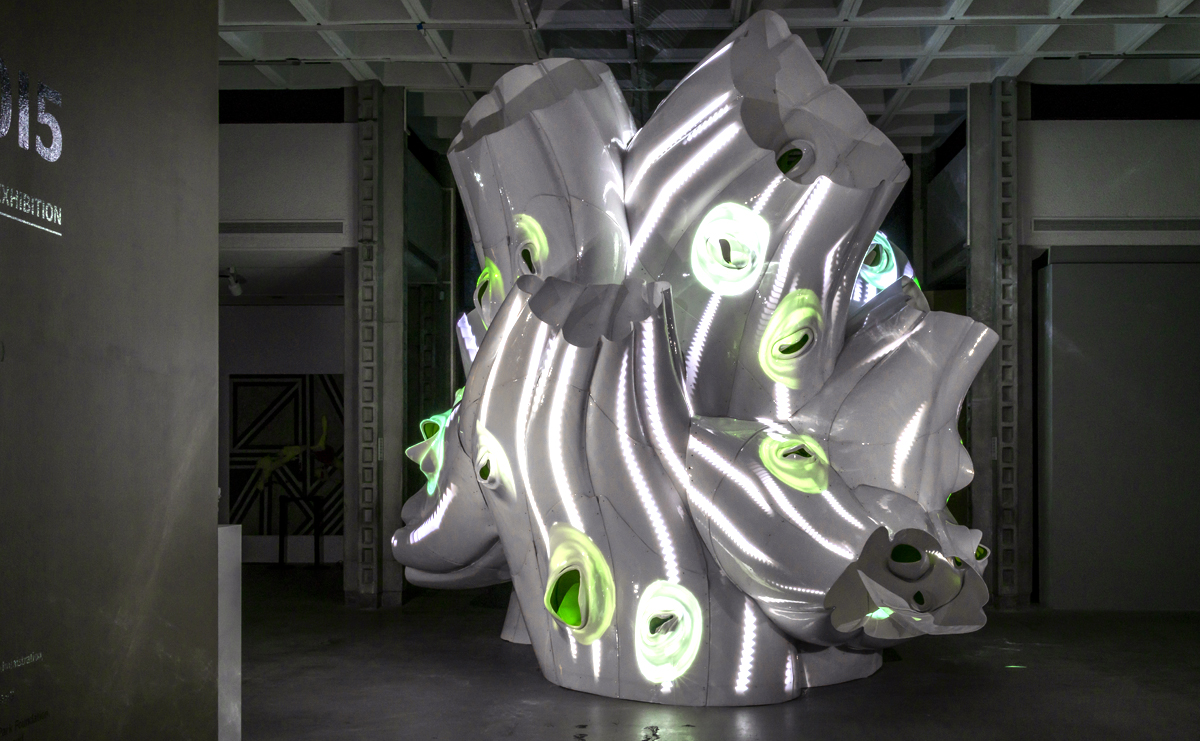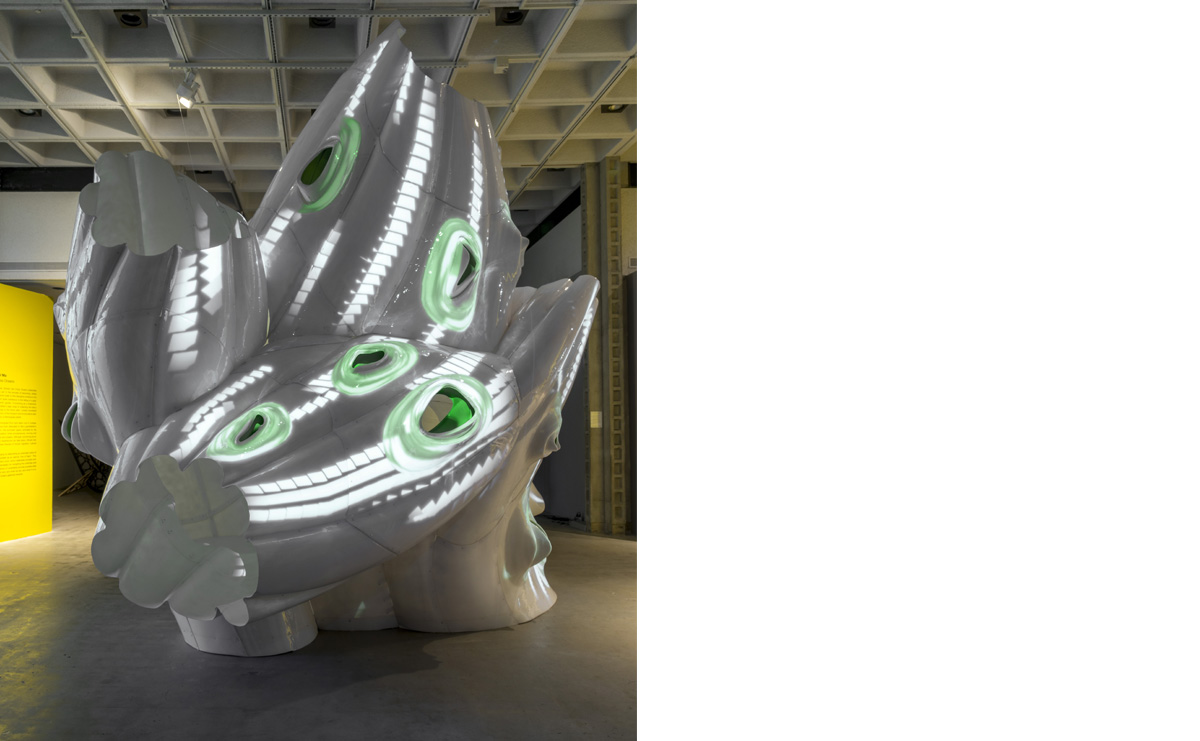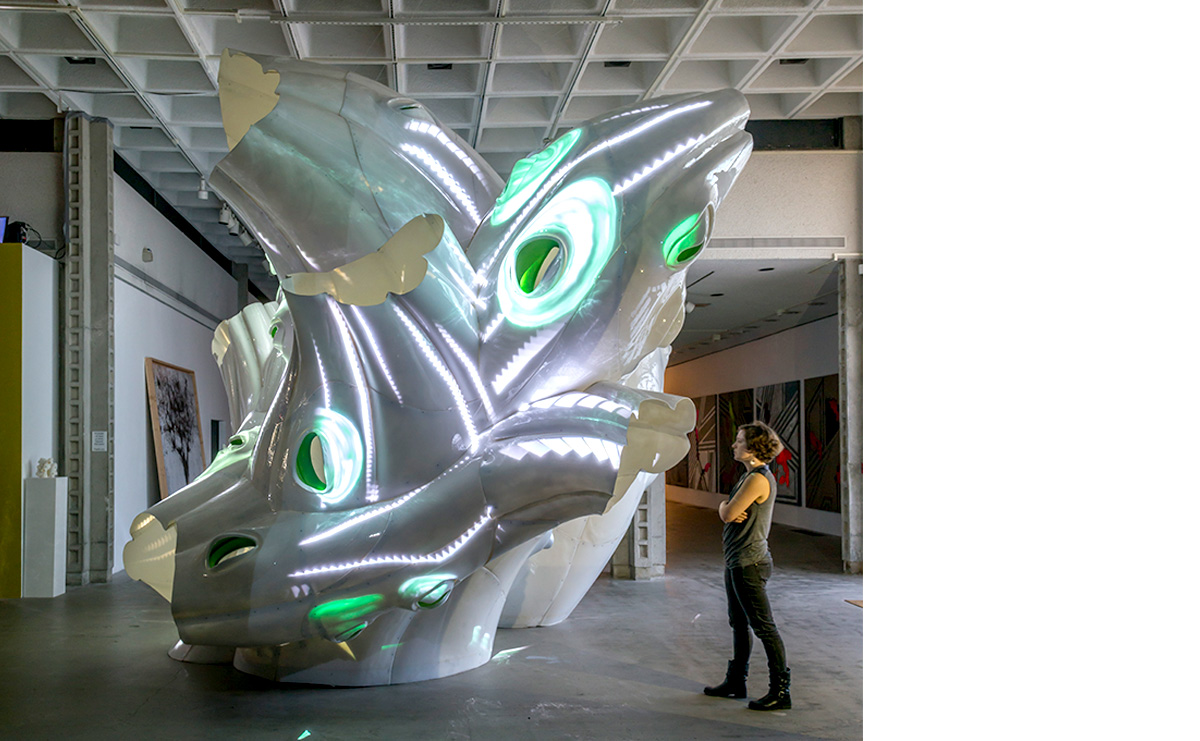C.O.L.A. M.A.G. Installation
Client: Department of Cultural Affair, City of Los Angeles
Program: Installation
Size: 500 sq ft
Budget: $15,000
Completion Date: May 17th 2015
Built: Built
Material: Thermaformed plastic, Projection
Architect: Herwig Baumgartner, Scott Uriu
Involvement: Projection by Mary Franck
Team: Aaron Ryan, Nema Ashjaee, Viola Ago, Nick Taylor, Derek Ramsey, Andranik Ognayan
Consultant: Matthew Melnyk (structural engineer), Tomas Osinski (Fabrication Consultant)
C.O.L.A. M.A.G. Installation
Baumgartner+Uriu's installation is a site-specific installation designed for the City of Los Angeles Municipal Art Gallery Installation.
Rooted in Baumgartner+Uriu's work and ongoing research, Apertures challenges the notion of an architectural opening as a static object. Moreover, it aims to redefine the DNA of a window both in terms of its appearance and materiality, as well as its nature as an object in continuous flux, responding to its environment through video projection. The pavilion and its apertures are designed to physically engage the visitor with the architectural work through sensors and video feedback loops creating an immersive spatial environment in which the visitor can experience their own biorhythms through color and patterns.
The 16â€footâ€tall, thin shell structure was designed to solely rely on its extremely thin surface(1/8â€) as support, requiring no additional structural elements. Structure and surface are collapsed into a single component supported through its shape, creased surfaces and material strength only. Each one of the 233 panels is unique in terms of its shape. They are CNC milled from polyurethane foam, heat formed out of thermoplastic polymer resin, and then laminated together into a single object. Unique to this project is the proposal of building as organism, challenging how architecture can interface with its users and its environment in which the boundary between the human body and architectural object dissolves into an immersive, interactive environment. This entails both the use of technology to augment its performance and a design aesthetic that is incongruous and can incorporate analog features into a digital design process.
Rooted in Baumgartner+Uriu's work and ongoing research, Apertures challenges the notion of an architectural opening as a static object. Moreover, it aims to redefine the DNA of a window both in terms of its appearance and materiality, as well as its nature as an object in continuous flux, responding to its environment through video projection. The pavilion and its apertures are designed to physically engage the visitor with the architectural work through sensors and video feedback loops creating an immersive spatial environment in which the visitor can experience their own biorhythms through color and patterns.
The 16â€footâ€tall, thin shell structure was designed to solely rely on its extremely thin surface(1/8â€) as support, requiring no additional structural elements. Structure and surface are collapsed into a single component supported through its shape, creased surfaces and material strength only. Each one of the 233 panels is unique in terms of its shape. They are CNC milled from polyurethane foam, heat formed out of thermoplastic polymer resin, and then laminated together into a single object. Unique to this project is the proposal of building as organism, challenging how architecture can interface with its users and its environment in which the boundary between the human body and architectural object dissolves into an immersive, interactive environment. This entails both the use of technology to augment its performance and a design aesthetic that is incongruous and can incorporate analog features into a digital design process.




